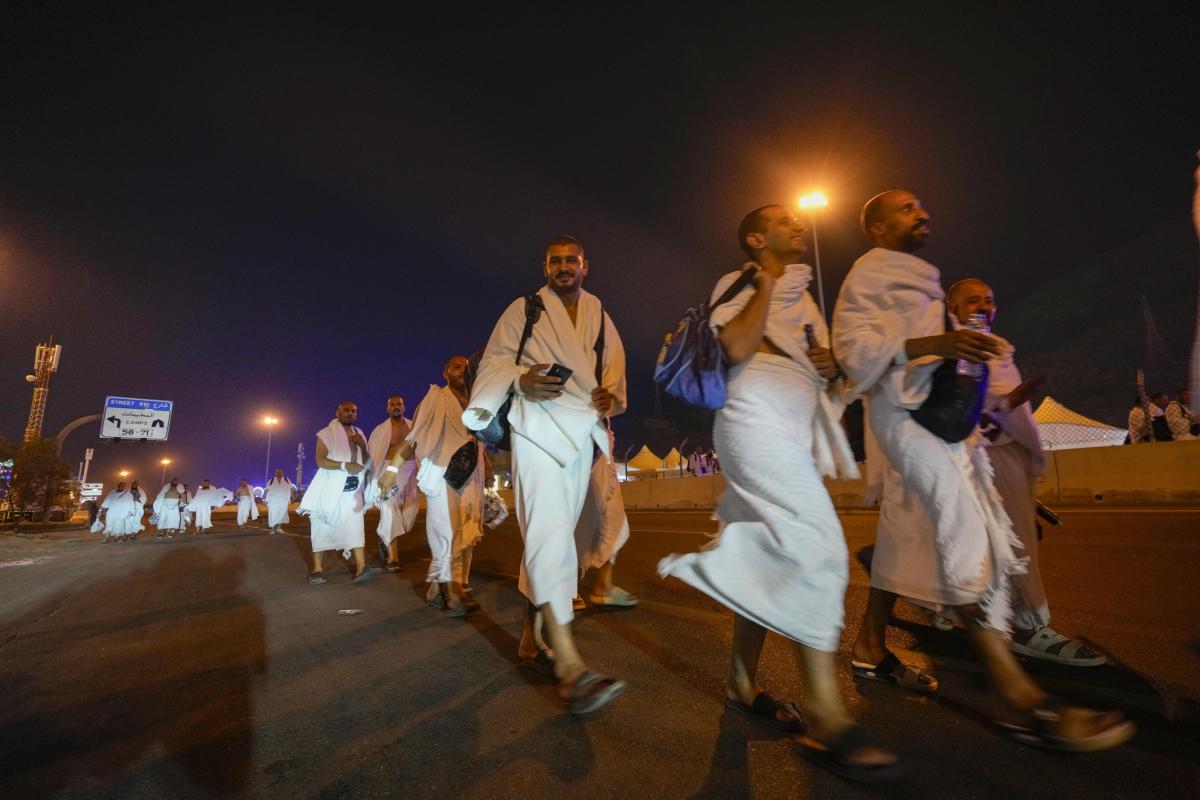MOUNT ARAFAT, Saudi Arabia (AP) — Following the prophets under a blazing sun, Muslims from around the world gathered Saturday on a sacred hill in Saudi Arabia for intense, daylong worship and reflection.
The ritual on Mount Arafat, known as the Hill of Mercy, is considered the pinnacle of the Hajj pilgrimage. It is often most memorable for pilgrims, who stand shoulder to shoulder, feet to feet and ask God for mercy, blessings, prosperity and good health. The mountain is located about 20 kilometers southeast of Mecca.
It is believed that Prophet Muhammad delivered his last speech, known as the Farewell Address, on the holy mountain 1,435 years ago. In the sermon, the prophet called for equality and unity among Muslims.
“It’s indescribable,” said Ahmed Tukeyia, an Egyptian pilgrim, upon his arrival Friday evening at a tent camp at the foot of Mount Arafat.
The Hajj is one of the largest religious gatherings in the world. The rituals officially began on Friday when pilgrims traveled from Mecca’s Grand Mosque to Mina, a desert plain just outside the city.
Saudi authorities expect the number of pilgrims to exceed 2 million this year, close to pre-coronavirus pandemic levels.
The pilgrimage is one of the five pillars of Islam. All Muslims are required to perform the five-day hajj at least once in their lives, if they are physically and financially able to make the demanding pilgrimage.
The rituals largely commemorate the stories in the Quran about the prophet Ibrahim, his son, the prophet Ismail, and Ismail’s mother Hajar – or Abraham and Ishmael as they are called in the Bible.
This year’s hajj took place against the backdrop of the raging war in the Gaza Strip between Israel and Hamas, which pushed the Middle East to the brink of a regional war between Israel and its allies on the one hand and Iranian-backed militant groups on the other hand.
Palestinians in the coastal enclave of Gaza were unable to travel to Mecca for the hajj this year due to the closure of the Rafah crossing in May, as Israel expanded its ground offensive to the southern city of Rafah on the border with Egypt.
To head off potential protests or chants about war during the hajj, Saudi authorities said they will not tolerate the politicization of the pilgrimage.
The time of year when the Hajj takes place varies, as it lasts five days in the second week of Dhu al-Hijjah, the last month of the Islamic lunar calendar.
Most Hajj rituals are held outdoors with little or no shade. When it falls in the summer months, temperatures can rise above 40 degrees Celsius (104 Fahrenheit). The Ministry of Health has warned that temperatures at the holy sites could reach 48 degrees Celsius. It urged pilgrims to use umbrellas and drink more water to stay hydrated.
After Saturday’s worship service at Arafat, pilgrims will travel a few kilometers to a site known as Muzdalifa to collect pebbles that they will use in the symbolic stoning of pillars representing the devil in Mina.
Pilgrims then return to Mina for three days, which coincides with the festive Eid al-Adha holiday, when financially able Muslims around the world slaughter livestock and distribute the meat to poor people. They then return to Mecca for a final circumambulation known as Farewell Tawaf.
Once the Hajj is over, men are expected to shave their heads, and women are expected to cut off a lock of hair as a sign of renewal. Most pilgrims then leave Mecca and head to the city of Medina, some 210 miles away, to pray in the tomb of the Prophet Mohammed, the Holy Chamber. The tomb is part of the Prophet’s Mosque, one of the three holiest sites in Islam, along with the Grand Mosque in Mecca and the Al Aqsa Mosque in Jerusalem.
The Hajj is a notorious bottleneck for crowds. In 2015, several thousand pilgrims were crushed during a massive influx. Saudi authorities have never released a final death toll.
In recent years, Saudi authorities have made significant efforts to improve access and prevent fatalities. Tens of thousands of security personnel were deployed throughout the city, especially around the holy sites, to control crowds, and the government built a high-speed rail line to transport people between holy sites in the city, which was gridlocked with traffic during the period. the hajj season. Pilgrims enter through special electronic gates.
Saudi authorities also expanded and renovated the Grand Mosque, where cranes can be seen surrounding some of the seven minarets, while construction was underway at the holy site.
___
Associated Press religion reporting is supported by the AP’s partnership with The Conversation US, with funding from Lilly Endowment Inc. The AP is solely responsible for this content.
